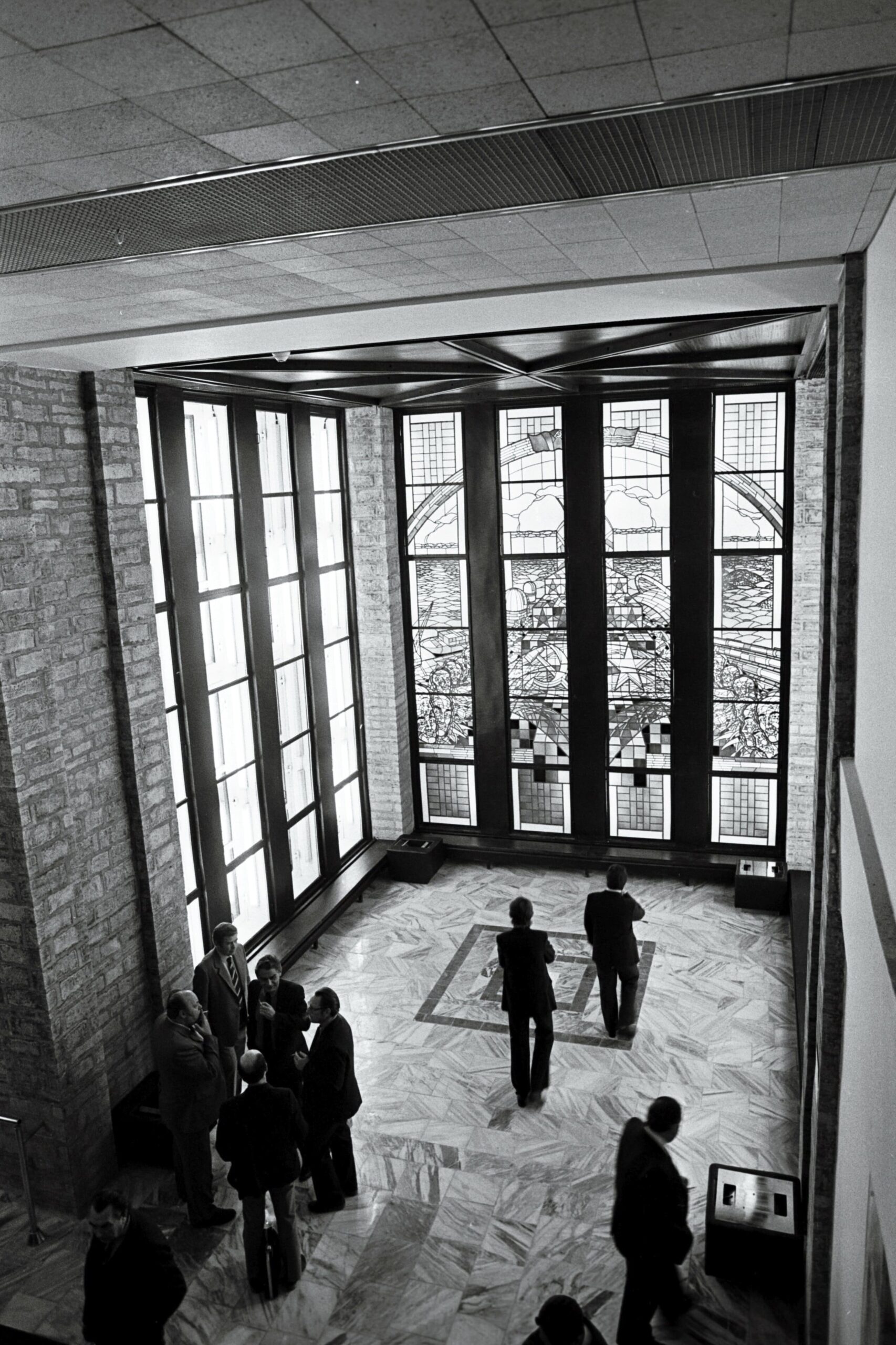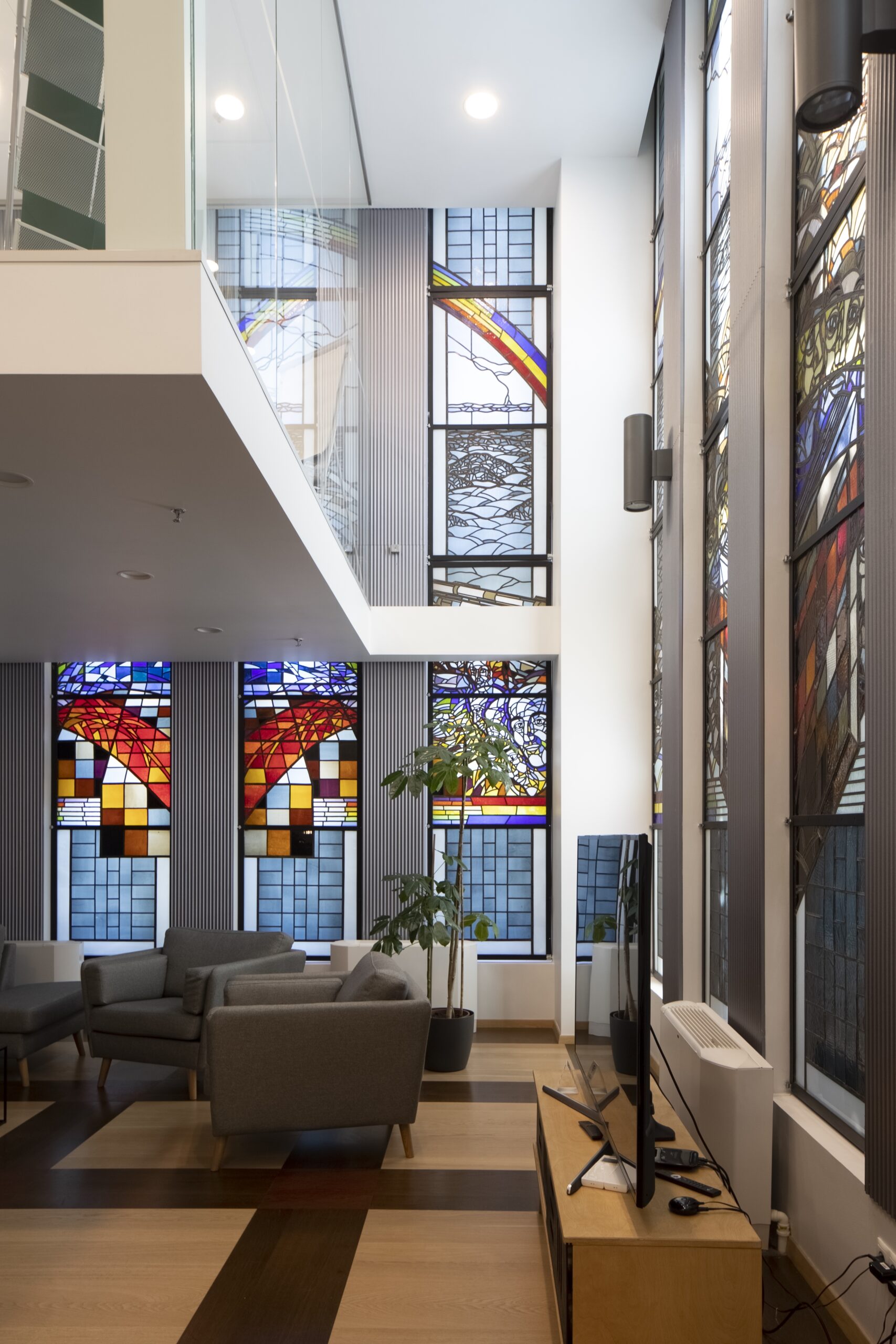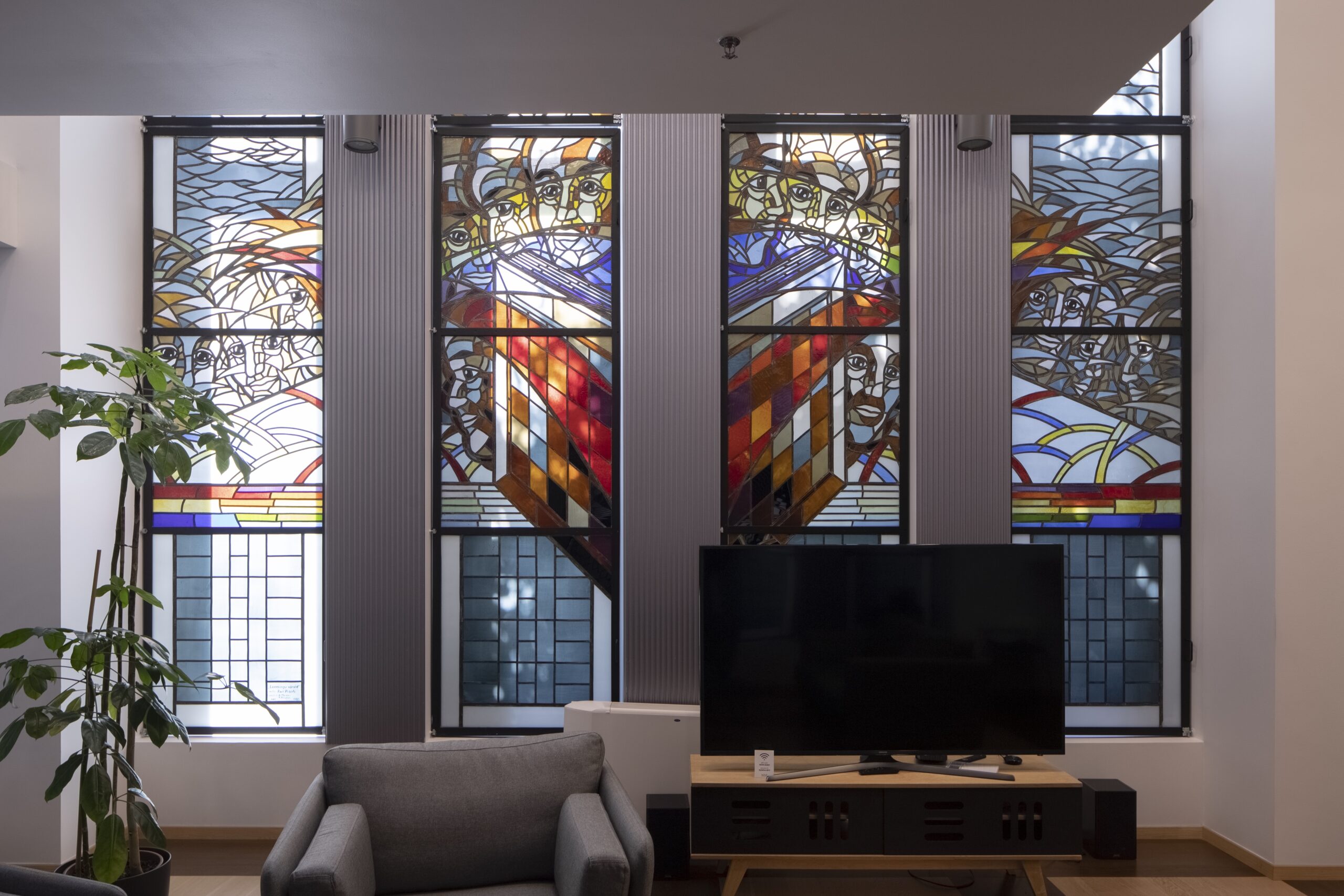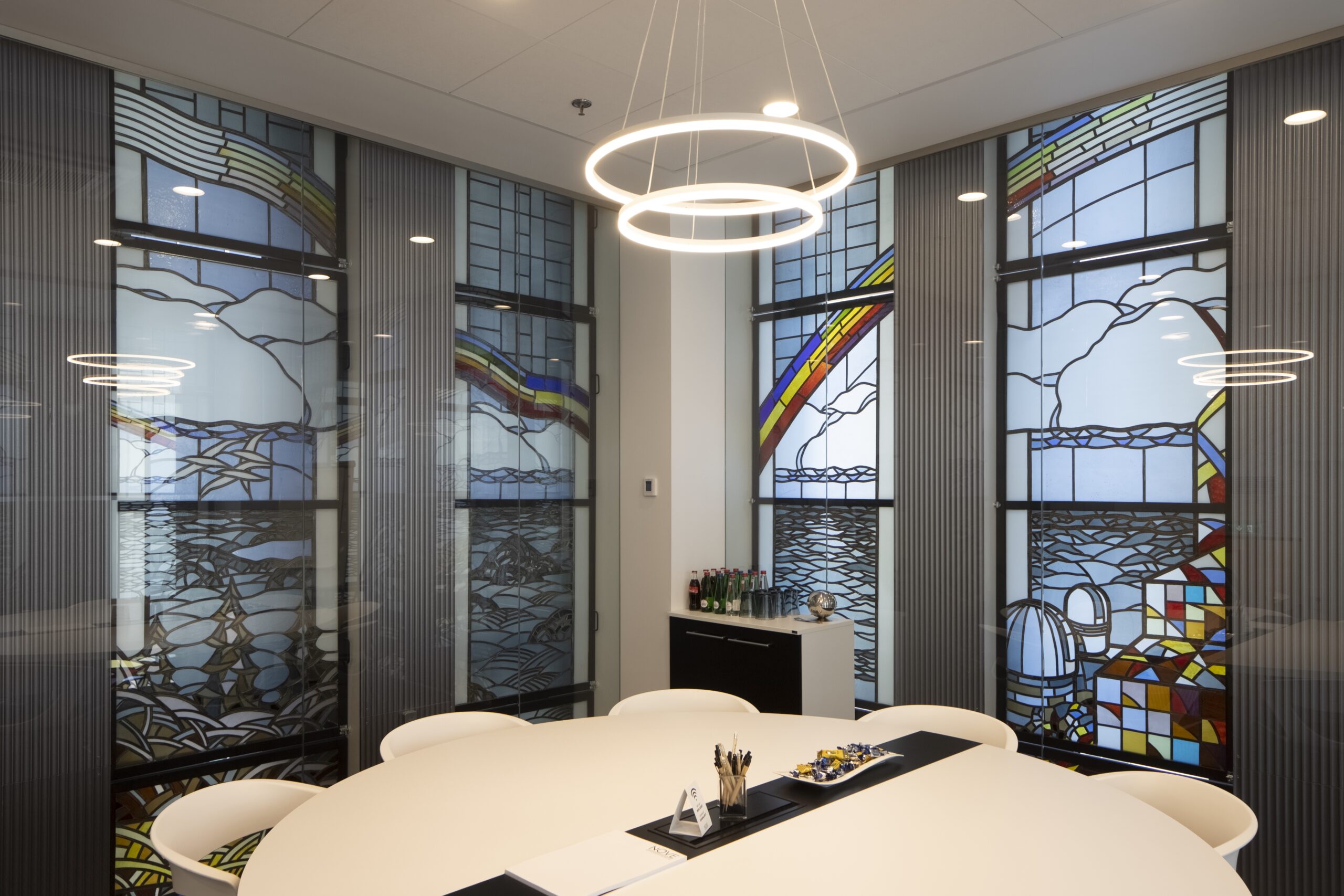Stained-Glass Windows at Sakala Centre
Year of completion: 1986
Address: Harju County, Tallinn, Estonia pst 9
Author: Rait Prääts
Stained glass
72 square metres
Not listed as a cultural monument
The Estonian Communist Party Central Committee’s republican House of Political Education, later known as Sakala Centre, was completed in 1985. The building served both a representative conference hall and a cultural centre purpose. Although it became a known cultural centre during the 1990s, many non-political events actually took place there already during the Soviet Era, when the building hosted, for example, the Miss Estonia beauty pageants.
The building designed by Raine Karp, Mati Raigna and Toivo Kallas has been described as postmodernist, as the façade, which resembles the city wall, was inspired by older architecture in Tallinn. The interior designers Aulo Padar and Kirsti Laanemaa, on the other hand, took into account a modern taste when designing the interior, using expensive materials such as Sayan marble and Czech glass to achieve a dignified atmosphere. The mahogany seating furniture alone was alleged to use up the yearly reserve of mahogany intended for use in Estonia.
A design competition with three invited participants, out of whom Rait Prääts was the winner, was held for the creation of the corner tower’s stained-glass windows. For the artist, this commission meant almost three years of intense work, accompanied by continuous examinations by officials, dictations, and ultimatums. The artist also had to depict Soviet symbolism on the stained glass. It is remarkable that this piece and Evald Okas’s pannel in Maarjamäe Palace were the only monumental painting of the late Soviet Era that visualised the symbolism of the occupational power so literally.
A view to the middle part of the three-wall piece, which depicted national artificial landscapes (Tartu Observatory, Port of Tallinn, Tallinn Song Festival Grounds), opened from a distance, but the other two walls could only be experienced by standing at a few metres distance inside the tower. Compared to the ceremoniousness of the middle wall, the side walls were more modest, depicting Estonian coastal cliffs, groves, and drumlins.
After the Independence, the artist removed the foreign power symbols from the stained glass. In 2007, it was decided that the Sakala Centre building was to be demolished – as a sign of the developer’s ‘good will,’ the tower part of the old building with the stained-glass windows was preserved, thus creating a peculiar mausoleum-like exposition hall for the windows. By now, a mezzanine has been built into the tower, further breaking the wholeness of the monumental painting, and creating the impression of an exclusive wallpaper into the room used as a conference hall.
Gregor Taul











